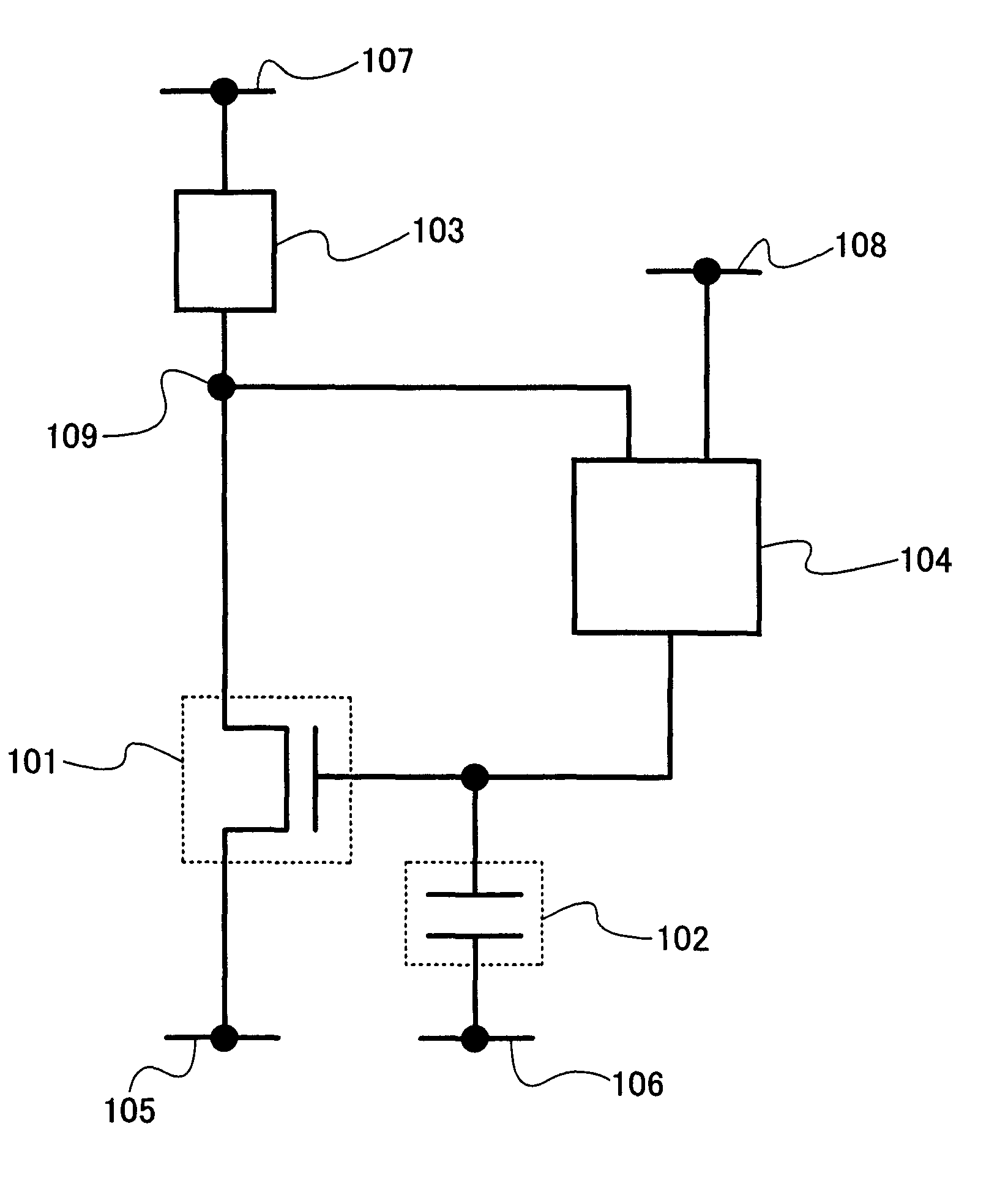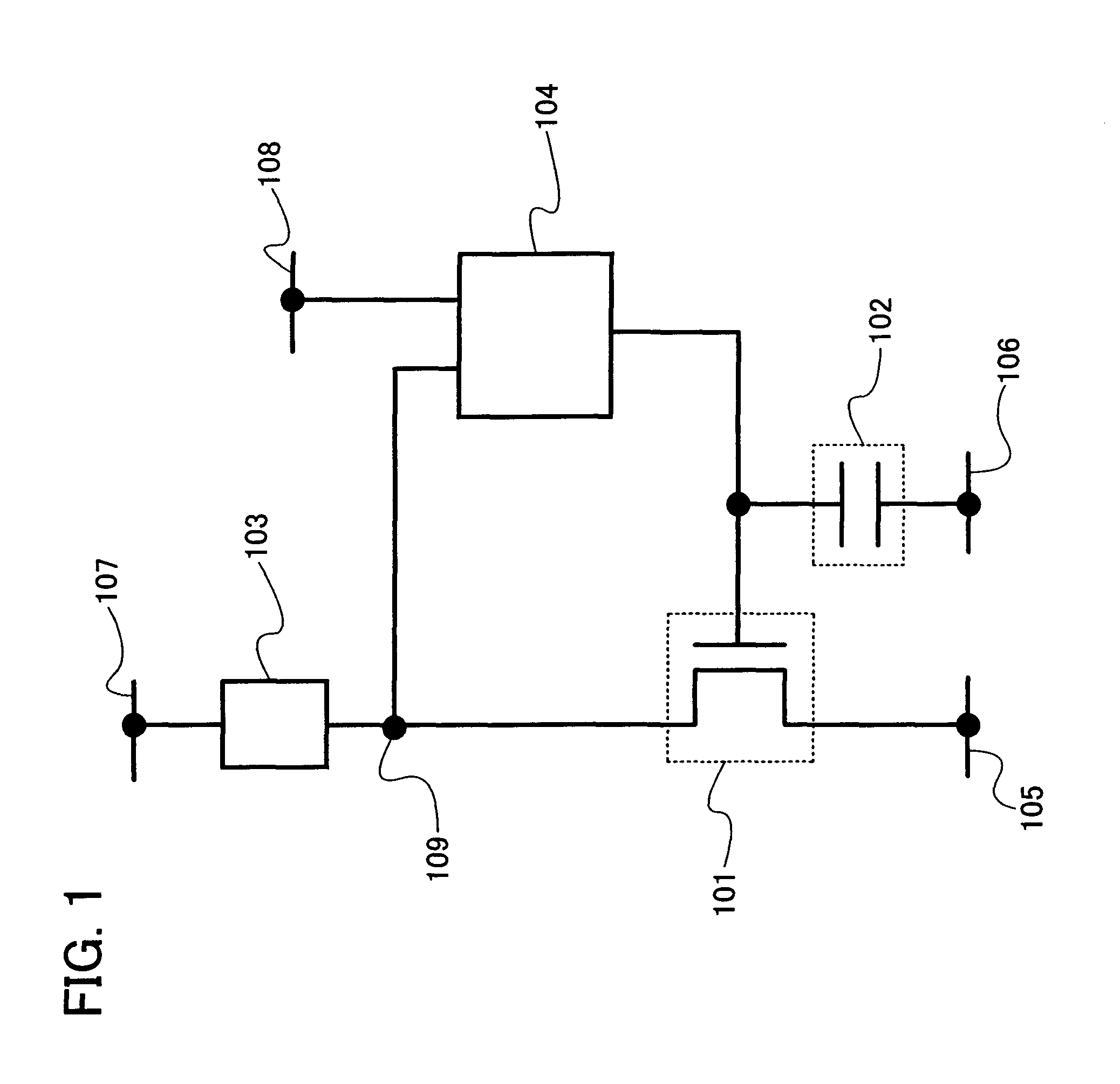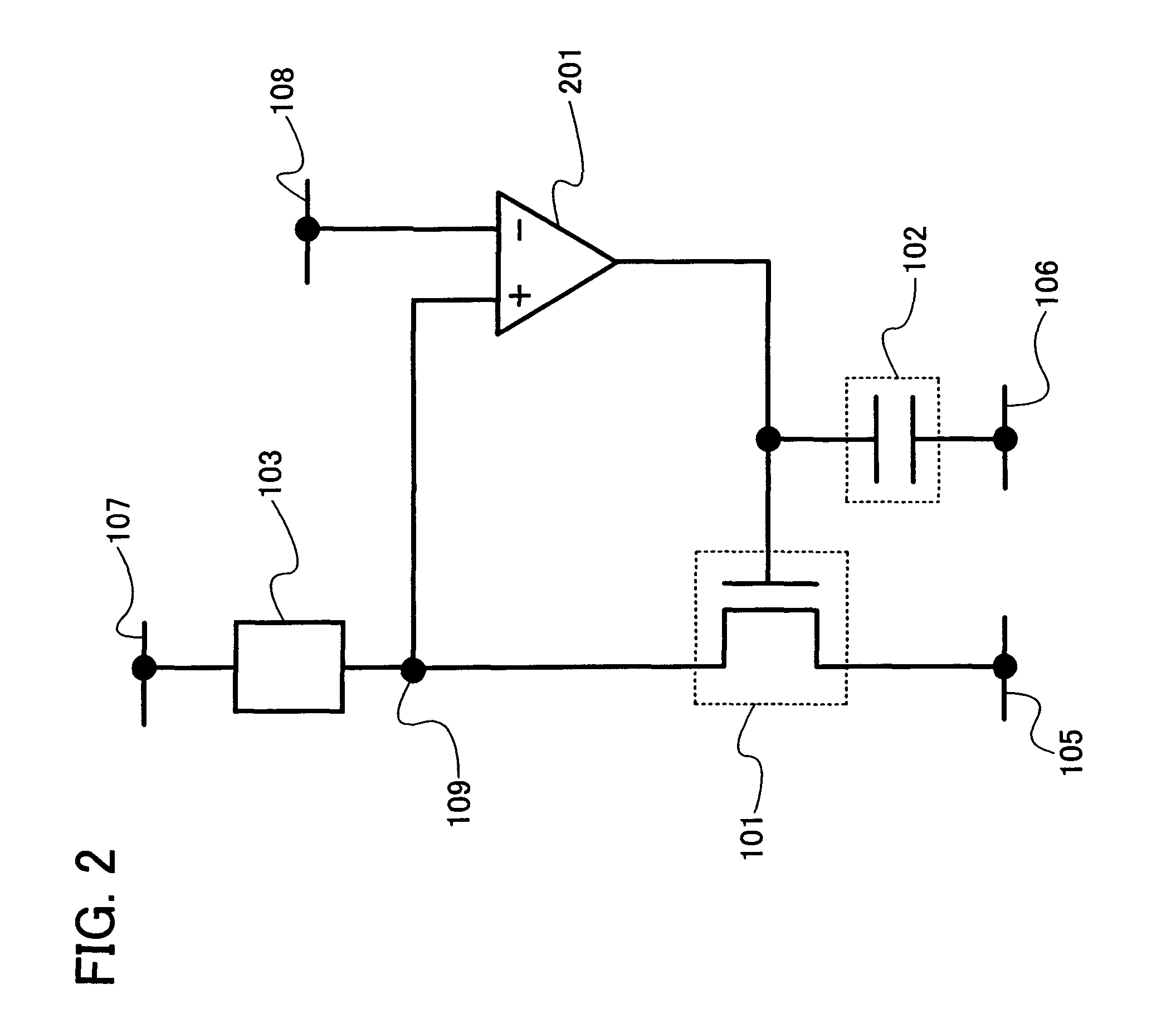Semiconductor device
a technology of semiconductors and devices, applied in static indicating devices, instruments, electroluminescent light sources, etc., can solve the problems of long time, slow signal write speed, and capacitors of wiring, and achieve the effect of reducing the influence of a variation in characteristics of transistors and improving signal write speed
- Summary
- Abstract
- Description
- Claims
- Application Information
AI Technical Summary
Benefits of technology
Problems solved by technology
Method used
Image
Examples
embodiment mode 1
[0134] A basic principle of the invention can be applied to a display device of which a pixel is formed of a light emitting element capable of controlling light emission luminance by a current value flowing therethrough. An EL element is given as a typical light emitting element.
[0135] Moreover, the invention can be applied not only to a pixel having a light emitting element such as an EL element, but also to various analog circuits having a current source. In this embodiment mode, the principle of the invention is described.
[0136] First, a basic structure of a semiconductor device based on the basic principle of the invention is shown in FIG. 1. The semiconductor device includes a transistor 101, a capacitor 102, a current-voltage converting element 103, and an amplifier circuit 104. It is to be noted that the transistor 101 is an n-channel transistor.
[0137] The transistor 101 has a first terminal (one of a source terminal and a drain terminal) connected to a wire 105, a second ...
embodiment mode 2
[0168] In Embodiment Mode 1, a current flowing through a transistor is controlled by detecting a drain potential of a transistor connected to a current-voltage converting element in series and setting a drain potential of the transistor by an amplifier circuit. In this embodiment mode, description is made of a structure where a current flowing through a transistor is controlled by detecting a drain potential of a transistor connected to a current-voltage converting element in series and setting a source potential of the transistor by an amplifier circuit.
[0169] A semiconductor device shown in FIG. 20 includes a transistor 2001, a capacitor 2002, a current-voltage converting element 2003, and an amplifier circuit 2004. It is to be noted that the transistor 2001 is an n-channel transistor.
[0170] The transistor 2001 has a first terminal (one of a source terminal and a drain terminal) connected to an output terminal of the amplifier circuit 2004, a second terminal (the other of the so...
embodiment mode 3
[0196] In this embodiment mode, description is made of a configuration which can be applied to an amplifier circuit of the semiconductor device described in Embodiment Modes 1 and 2. An operational amplifier or a differential amplifier circuit can be used as the amplifier circuit. Further, a voltage feedback operational amplifier or a current feedback operational amplifier may be used as the amplifier circuit. Alternatively, an operational amplifier additionally provided with various correction circuits such as a phase compensation circuit may be used. It is to be noted that the amplifier circuit described in this embodiment mode can be used in other embodiment modes described later.
[0197] Note that an operational amplifier normally operates so that a potential of a non-inverting input terminal and a potential of an inverting input terminal are equal to each other; however, the potential of the non-inverting input terminal and the potential of the inverting input terminal are not t...
PUM
 Login to View More
Login to View More Abstract
Description
Claims
Application Information
 Login to View More
Login to View More - R&D
- Intellectual Property
- Life Sciences
- Materials
- Tech Scout
- Unparalleled Data Quality
- Higher Quality Content
- 60% Fewer Hallucinations
Browse by: Latest US Patents, China's latest patents, Technical Efficacy Thesaurus, Application Domain, Technology Topic, Popular Technical Reports.
© 2025 PatSnap. All rights reserved.Legal|Privacy policy|Modern Slavery Act Transparency Statement|Sitemap|About US| Contact US: help@patsnap.com



